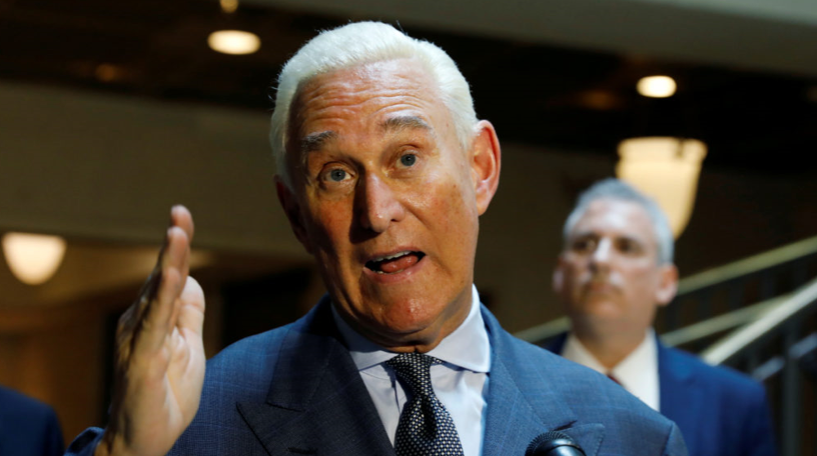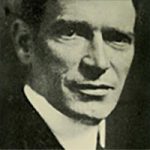Roger and Me: New Jersey and the Stone Zone
Listen to audio version of this article

I met Roger Stone in 1981. On my second day on the job as press secretary for the Tom Kean for Governor campaign, Stone blew into the headquarters in Union, a wispy, brash 28-year-old possessed of a self-confidence easily mistaken for insufferable cockiness.
While most of the staff dressed in polyester or chino slacks from The Gap and button-down dress shirts from Macy’s, Stone was attired in a custom-made pinstripe suit from Savile Row.
He wore it not because it was a sign of the success he’d already achieved as a partner in a political consulting and lobbying firm, but because he was…..well, because he was ROGER STONE!
He’d drop into the headquarters two or three times each week during the four-month long campaign, calmly dispensing wisdom and insight that he said --- if followed to the letter --- would result in a Kean victory.
He was soft-spoken, polite, courteous and gracious toward others in the campaign, but the teeth of the shark that lay beneath the custom-tailored double-breasted outfit revealed themselves when the conversation turned to the opposition.
To Stone, campaigns were not about a clash of ideas or a competition over which candidate was better equipped to lead a government and serve the citizenry.
They were war and the rules of engagement weren’t to be found in high school civics books.
Stone didn’t merely inch tentatively up to the edge; he set up camp there. He didn’t operate in the shadows; the brighter the light, the better he liked it.
A few days before the election while we all dealt with the rising pressure and anxiety of what appeared increasingly to be an extremely close contest, a story broke recounting Stone’s involvement with alleged dirty tricks during Richard Nixon’s 1972 presidential campaign.
We all fretted that the revelations potentially could tip the balance in the voting now only three days away, but Stone glanced at the front page story, said “Lousy photo; they didn’t get my best side” and tossed the newspaper into the trash can.
Kean went on to win by 1,797 votes, the slimmest margin in state history and one which led to the first ever gubernatorial election recount. Stone, naturally, claimed the credit; the rest of us were not so sure.
Following Kean’s election, I lost contact with Stone. I joined the new administration while Stone went on to even greater prominence and riches.
I crossed paths with him rather infrequently, usually at political events or on those rare occasions when he’d stop by the governor’s office to chat with Kean.
On one of those visits, I sat in on the conversation while Stone counseled the governor on re-election strategy for 1985.
Kean should, Stone advised, embrace the social issues --- anti-abortion, oppose bussing, support the death penalty, reinstate prayer in the public schools, support gun rights.
Kean did none of those and was re-elected with 70 per cent of the vote --- a plurality upwards of three-quarters of a million --- both records which will likely never be surpassed.
While he could be charming and gracious, Stone possessed a cruel streak when dealing with those with whom he either disagreed or who he felt had disrespected him in some fashion.
His ugly attacks on President George H. W. Bush and the Bush family shattered the bar on vitriol. He despised Ed Rollins, manager of Ronald Reagan’s 1984 re-election campaign, even to the point of ridiculing him after Rollins suffered a minor stroke in the White House.
He was exceptionally close to Nixon, often visiting the former president at his home in Bergen County and bringing along guests who he felt could benefit from Nixon’s advice and counsel.
I, for one, was not surprised when Stone became involved with Donald Trump as an advisor and --- in the view of some --- a Svengali. The chemistry between the two seemed instant.
A Trump for President campaign was the fulfillment of Stone’s fondest wish. He was back in the spotlight he craved, booked on one television show after another, a smooth, suave and articulate spokesman in his impeccable Savile Row threads.
Neither was I particularly surprised to learn he’d been caught up in the investigation of alleged Trump campaign collusion with Russian agents to undermine Hillary Clinton. It was the kind of atmosphere and high intrigue that Stone reveled in, one which gave him even greater public exposure, including testimony before the House Intelligence Committee.
He announced weeks ago that he anticipated an indictment by Special Counsel Robert Mueller and last week his expectations were realized when the FBI raided his home in Florida in the pre-dawn hours and arrested him on charges of lying to Congress, witness tampering and obstruction.
The raid itself was shameful, involving more than two dozen flak-jacket clad, assault weapons toting agents, moving commando style across the front lawn of Stone’s home while shouting warnings.
It was all carried out in front of lights and cameras from CNN, tipped off in advance by law enforcement to assure the entire operation was flashed across every television screen in America.
CNN, of course, denied advance knowledge of the operation, insisting that its crew showed up at Stone’s home at 6 a.m. as a result of its research and dogged pursuit of the story --- an absurd notion on its face. As is always the case, it was a discreet telephone call to the news outlet that brought the crews scurrying in the middle of the night to a quiet street in Fort Lauderdale.
The raid was an over the top show of force by the FBI, its agents acting as though they were lying in ambush in the woods along a dirt road in Louisiana awaiting the arrival of Bonnie and Clyde.
It was not the agency’s finest hour, nor did it reflect well on the professionalism of whoever ordered the raid and invited to tag CNN along.
It did, though, backfire to some extent by badly misjudging Stone and his flair for the dramatic. Following his arraignment, Stone held a news conference to assert his innocence, proclaiming “I will not bear false witness against my president” and dashing to the top of the courthouse steps where he flashed the arm spread victory pose made famous by Nixon.
It was vintage Stone and the image of the Nixon impersonation hit every television and newspaper newsroom in the country --- just as Stone knew it would.
Whether Stone is guilty as charged will be decided by a jury if it’s not plea bargained first, but Mueller’s shabby treatment and effort to humiliate him publicly were not only unnecessary but gave ammunition to those who’ve been vocal in their criticism of his investigation as a politically motivated attempt to overturn the 2016 election while destroying the lives and careers of anyone associated with Trump.
Stone is 66 years old now (hard for me to comprehend), but the brash 28-year-old I encountered for the first time still lives in him, clad in the latest Savile Row style.
Even if Mueller succeeds in putting him in prison orange, Stone will continue to cut a dashing figure.
Carl Golden is a senior contributing analyst with the William J. Hughes Center for Public Policy at Stockton University.






Great reflection. I first met Roger in 1977 when he was elected Chairman of the Young Republicans. Mueller better not underestimate the Prince of Darkness! I would never bet against Roger.